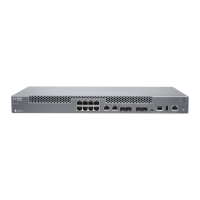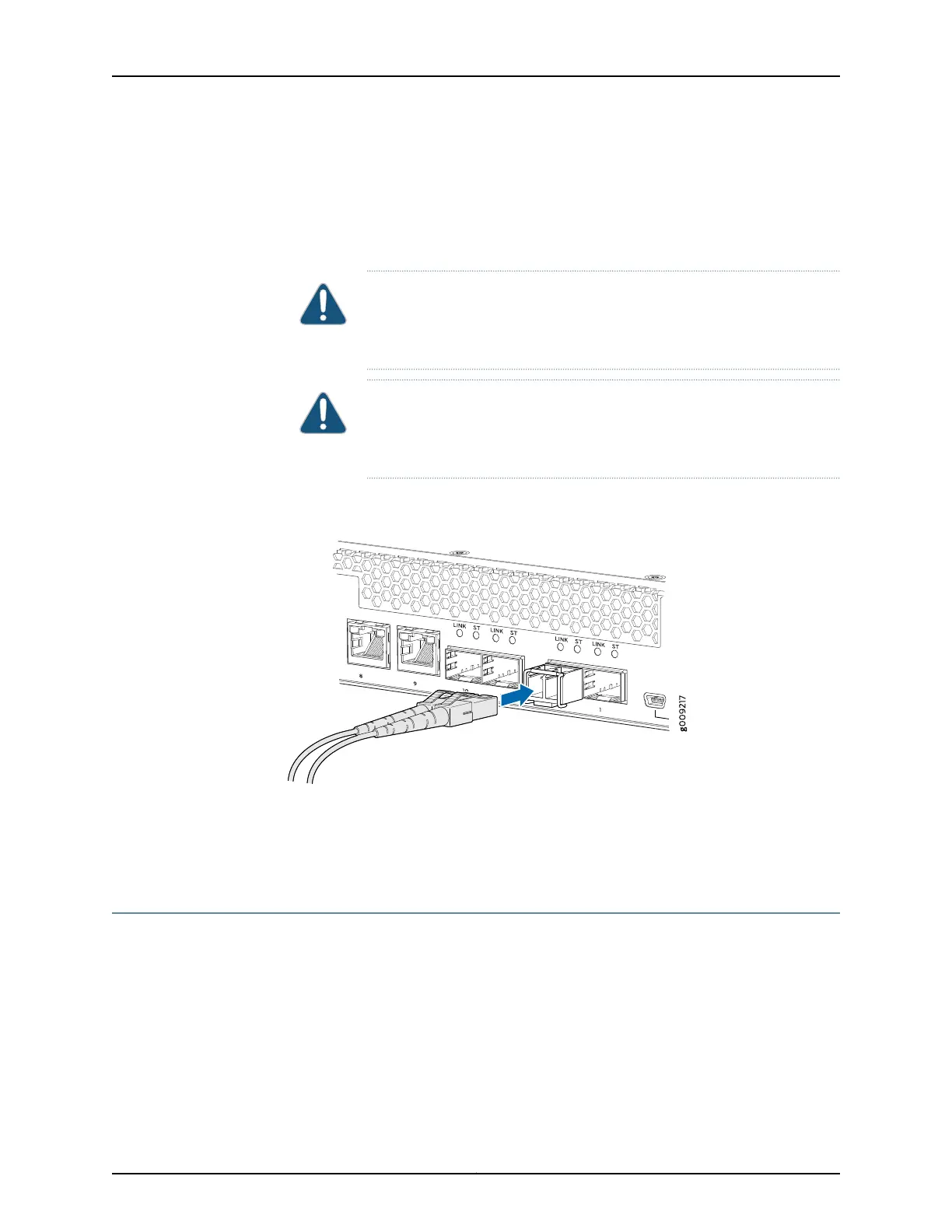3. Insert the cable connector into the optical transceiver (see Figure 23 on page 106).
4. Secure the cables so that they are not supporting their own weight. Place excess cable
out of the way in a neatly coiled loop. Placing fasteners on a loop helps cables maintain
their shape.
CAUTION: Do not bend fiber-optic cables beyond their minimum bend
radius.Bending the cablesbeyond theirminimum bend radius candamage
the cables and cause problems that are difficult to diagnose.
CAUTION: Do not let fiber-optic cables hang free from the connector. Do
not allow fastened loops of cables to dangle, which stresses the cables
at the fastening point.
Figure 23: Inserting a Fiber-Optic Cable into a Transceiver
Related
Documentation
Disconnecting a Fiber-Optic Cable from an MX150 on page 106•
• Maintaining Fiber-Optic Cables in an MX150 on page 107
Disconnecting a Fiber-Optic Cable from an MX150
Before you disconnect a fiber-optic cable from an optical transceiver installed in an
MX150, ensure that you have taken the necessary precautions for safe handling of lasers
(see “Laser and LED Safety Guidelines and Warnings for the MX150” on page 137).
Ensure that you have the following parts and tools available:
•
Rubber safety cap to cover the transceiver
•
Rubber safety cap to cover the fiber-optic cable connector
Copyright © 2017, Juniper Networks, Inc.106
MX150 3D Universal Edge Router Hardware Guide

